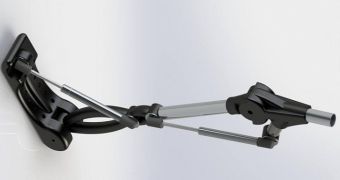Prosthetic prices took a miraculous nosedive last month, when the $50 / €50 Robohand completely outclassed a normal prosthetic hand that cost $40,000 / €40,000. Now, the same company is offering a robotic leg.
It really is looking as though soon no one will have to worry that losing a limb, or part of a limb, will completely cripple them.
Sure, we're ages away from genuine cybernetic replacements, but prosthetics are advancing really quickly thanks to 3D printing technology.
The Robohand was the first big clue that things had changed. After all, when you see a fifty dollar product wiping the floor with a forty grand prosthetic hand, there isn't much room for doubt.
The folks behind Robohand have banded together to make a robotic leg now, which they've decided to simply call RoboLeg.
This one is a more expensive product than the first, but not by too grand an amount. Well, it is costlier by a factor of ten, but still a lot cheaper than standard prosthetic legs.
It bears noting that the RoboLeg needs some non-3D printed materials, unless you have a metal 3D printer and can use that to make them.
They're pretty standard though: a few metal rods and two pneumatic pumps, plus a few minor things available in every common equipment shop.
RoboLeg supports both knee and angle movement, and will probably give leg amputees the ability not only to trudge, but stroll, maybe even jog a bit, eventually. Adjustments for varying heights and weights are possible, or will be soon enough.
And the best part is that the RoboLeg is fully open-source, allowing everyone around the world to download the plans and make modifications, maybe share their improvements with the rest of the world.
The only thing we're wondering about is how long-lived the prosthetic leg is going to be. The parts are, after all, printed out of plastic. No doubt the type of material (ABS, PLS, etc.) will play a role there, but it's still a question to ponder.
Not that it will make too much of a difference, given how cheap everything is. And it's not like normal prosthetics use that much better materials anyway.
And if you're still worried that your fake leg will look weird when you go out in public, don't worry! You can probably rig a padding that you can cover with one of those 3D printed fairings that came out the other day.

 14 DAY TRIAL //
14 DAY TRIAL // 
